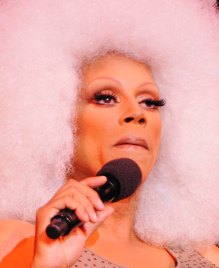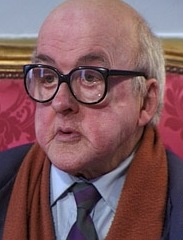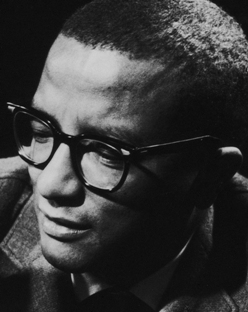Editor’s note: At AIDS.gov we dedicate time each week to listening and learning from our colleagues in the social media world. We are always looking to improve our use of Twitter given that we update our Twitter feed more than any of our other social media spaces. Our colleagues regularly host Twitter Chats (PDF) and Townhalls as a way of bringing the public into health-related conversations. The Department of Education and CDC recently collaborated to conduct the Stop Bullying Townhall and identified some best practices on how to engage the public. Are there other best practices you have identified? Share your thoughts about this post in the comments.

On March 20, 2012
@StopBullyingGov 
participated in its first Twitter Townhall hosted by the CDC and was joined in addition by the Anti-Defamation League. The “
#VetoViolence”

townhall on bullying was one of a series held by CDC on topic relating to youth violence. Widely promoted during the weeks prior, the chat attracted many users asking questions about bullying and attracted 207 visits to
StopBullying.gov using dedicated campaign links.One of the challenges with social media in the federal government is how to interact directly with followers. Often, we have limited capacity to reply to direct questions. Holding events such as a twitter townhall, however, allows a set timeframe for followers to directly interact with government representatives.
During the chat, the dedicated hashtag was seen trending worldwide. Engagement was high, with users asking questions using the hashtag, as well as users joining in on answering questions asked. In the preparations and throughout the chat itself, several best practices emerged in holding a Twitter Townhall:
- Having both Federal and Non-Federal official participants is useful to be responsive to questions that may be beyond the government’s purview to respond.
- Pre-preparing tweets is essential to responding quickly and accurately to inquiries. Using campaign tagged links to information on federal websites is especially helpful to understand the impact of the tweets.
- When having multiple handles respond, it is critical to delineate topic responsibility and have as many of the tweeters gathered together in a central location or on a conference call to determine who will respond to what questions.
- Allowing room for users to retweet is an important consideration in quickly crafting tweets
- Not every question will be answered. Having multiple people viewing the twitter chat to help identify questions is especially useful with high levels of engagement.
We hope to repeat such engagement on our next Twitter Townhall, hosted by the Washington DC Office of Human Rights on October 5 at 3pm EST. That event, using hastag
#BullyFreeDC 
, will have
@StopBullyingGov, @GLSEN, @PACERCenter, @TrevorProject, and @SafeSchoolsNow as official participants in the chat.
For more information on how HHS is coordinating social media projects and public engagement, visit the
Working Better and
People First sections of this site.
November Speakers at the Clinton
School
“Nobody is Poor,” Saul Garlick, CEO of ThinkImpact
Thursday, November 1 at 6:00 p.m. (Sturgis Hall)
- A social entrepreneur, Garlick is founder and CEO of ThinkImpact, a
global social enterprise that hosts the Innovation Institute, a summer immersion
opportunity for U.S. students to live and work in rural Africa to end poverty
through market-based solutions.
“The Bleak Past and the Grim Future,” James K.
Galbraith
Monday, November 5 at 6:00 p.m. (Sturgis Hall)
- The Lloyd M. Bentsen Jr. Chair in Government/Business Relations and
professor of government at the Lyndon B. Johnson School of Public Affairs at the
University of Texas, Galbraith is the author of the new book, “Inequality and
Instability: A Study of the World Economy Just Before the Great Crisis.” He’ll
discuss the state of the American economy.
David Williams, CEO of the Make-A-Wish Foundation
Thursday, November 8 at 12:00 p.m. (Sturgis Hall)
- As president and CEO of the Make-A-Wish Foundation, Williams leads the
foundation’s national staff and works closely with its 69 chapters in executing
the mission of granting the wishes of children with life-threatening medical
conditions to enrich the human experience with hope, strength and joy.
“What We Must Do for Our Students and Public Schools,” Barnett
Berry
Thursday, November 8 at 6:00 p.m. (Clinton Center, Great
Hall)
- The Clinton School will join the Arkansas Education Association and the
Clinton Foundation to host a lecture by Barnett Berry, founder and CEO of the
Center for Teaching Quality. His new book “Teaching 2030” advances a vision of
the future of teaching that is grounded in research, practice and hope for the
future of public education.
“The Rise of the Gridiron University: Higher Education’s Uneasy
Alliance with Big-Time Football,” author Brian Ingrassia
Friday, November 9 at 12:00 p.m. (Sturgis Hall)
- A visiting professor of history at Middle Tennessee State University,
Ingrassia will discuss his book, “The Rise of the Gridiron University,” which
documents the history and impact of college football’s role in shaping the
modern American university.
Ron Capps, director of the Veterans Writing Project
Monday, November 12 at 12:00 p.m. (Sturgis Hall)
- Capps directs the Veterans Writing Project, a Washington, D.C.-based
nonprofit that provides no-cost writing seminars and workshops for veterans,
active and reserve service members, and military family members. The project’s
core curriculum “Writing War: A Guide to Telling Your Own Story” is written by a
veteran for veterans and details the elements of craft involved in writing both
fiction and non-fiction.
“Laugh in Peace Comedy Tour,” starring Rabbi Bob Alper, Muslim
comic Azhar Usman and Rev. Susan Sparks
Monday, November 12 at 6:00 p.m. (Clinton Center, Great
Hall)
- Join us for a Kumpuris lecture featuring the Laugh in Peace Comedy Tour,
a show that promotes interfaith action, multiculturalism and peace through the
universal appeal of laughter. Beneath the laughs is a serious message of
healing, understanding and tolerance at a time when tension among different
religions is running high.
“Tension City: Inside the Presidential Debates,” Jim
Lehrer
Tuesday, November 13 at 6:00 p.m. (Sturgis Hall)
- A veteran PBS news anchor who has moderated 12 presidential and vice
presidential election debates, Lehrer will discuss his experience moderating the
first 2012 debate between President Barack Obama and Governor Mitt Romney. He
will also discuss his book, “Tension City: Inside the Presidential Debates, from
Kennedy-Nixon to Obama-McCain.”
“The Invisible War,” film director Kirby Dick
Thursday, November 15 at 12:00 p.m. (Sturgis Hall)
- An Oscar and Emmy-nominated director Dick will discuss his film, “The
Invisible War,” an investigative documentary about the epidemic of rape within
the U.S. Military. Winner of the Audience Award at the 2012 Sundance Film
Festival, the film follows service members who are victims of sexual assault and
their difficult quest for justice.
“The Medicaid Expansion in Arkansas,” Arkansas Surgeon General Dr.
Joe Thompson
Tuesday, November 27 at 12:00 p.m. (Sturgis Hall) *In partnership with
the Arkansas Interfaith Alliance
- Thompson will discuss the impact of expanding Arkansas’s Medicaid program
under the federal Patient Protection and Affordable Care Act. In addition to
serving as surgeon general, Thompson is director of the Arkansas Center for
Health Improvement and director of the Robert Wood Johnson Foundation Center to
Prevent Childhood Obesity.
Molly Barker, founder and CEO of Girls on the Run
Wednesday, November 28 at 6:00 p.m. (Sturgis Hall)
- Barker will discuss her work with Girls on the Run, a nonprofit dedicated
to empowering young girls through dynamic, conversation-based lessons and
running games. The 24-part Girls on the Run curriculum includes three parts:
understanding ourselves, valuing relationships and teamwork and understanding
how we connect with and shape the world at large.
“Preventing Bullying and Cyber-Bullying,” Tina Meier, founder of
the Megan Meier Foundation
Thursday, November 29 at 6:00 p.m. (Sturgis Hall)
- Tina Meier founded the Megan Meier Foundation in memory of her daughter
who committed suicide in 2006 after she was the victim of cyber-bullying
involving adult neighbors who created a fake MySpace account to communicate with
her. Since Megan’s death, Tina Meier has traveled the country to speak about
Internet safety and advocate for policies to prevent bullying and cyber-bullying
of children.



















